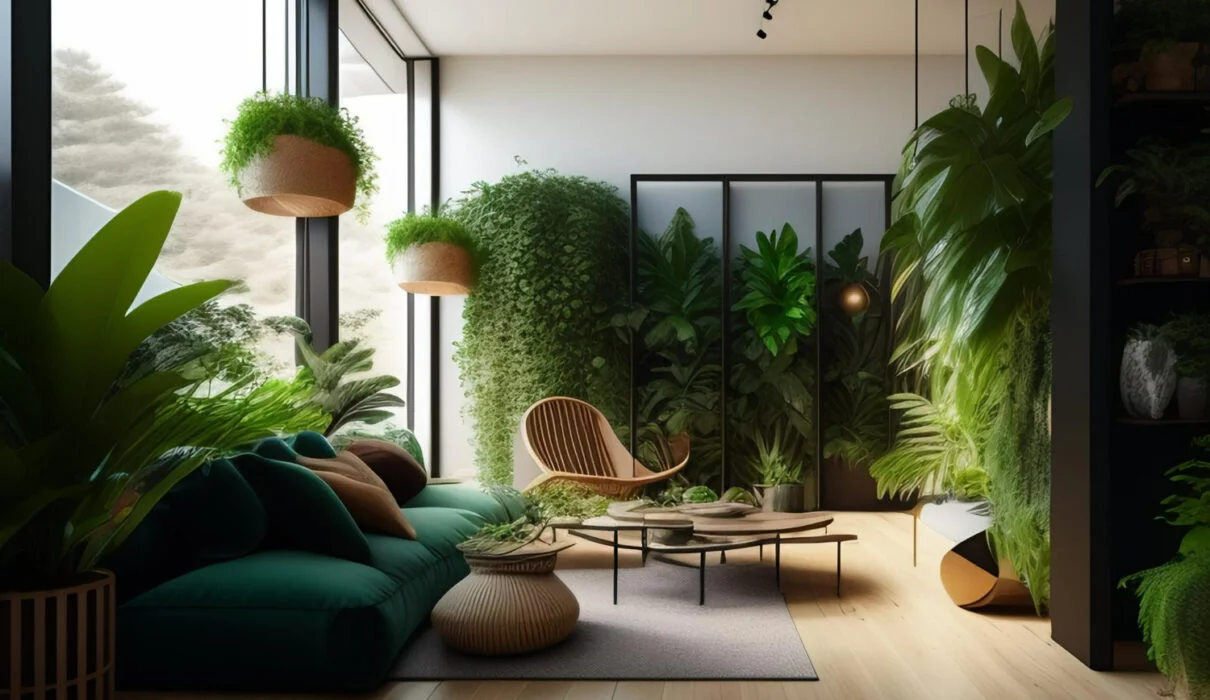Integrating natural elements into a space offers many advantages, from increased worker productivity to enhanced health and well-being, making this trend increasingly popular in offices, hospitals, schools, and homes.
Biophilic design encompasses various elements, from taking advantage of natural lighting, using wood and stone materials, and choosing colors inspired by nature – all these things contribute to biophilic design in any space.
Natural Materials
Utilizing natural materials like rattan, wood and stone can create the sense of being at one with nature. Selecting colors that evoke landscape elements like earthy browns and muted greens for subdued palettes; or vibrant yellows and blues can further strengthen this sense.
Project teams implementing biophilic design strategies must first assess the health baseline and performance priorities of their target population in order to select interventions that increase wellbeing, as well as monitor whether these biophilic designs improve performance metrics over time and at various points during a day or year.
At work or home, sustained exposure to nature provides far greater advantages than short encounters with it. Water features, windows that display trees and plants and gardens can all increase comfort, lower stress levels, boost happiness levels and ease anxiety or depression while providing moments of connection and respite.
Textures
Textures such as wood, stone, woven fabrics and bamboo flooring help people connect to nature through biophilic design. Beyond their visual aesthetic, these materials also tell our planet’s story; many biophilic designers prioritize selecting eco-friendly options when creating biophilic spaces.
Studies have proven that environments filled with natural elements promote improved health outcomes. One 2020 study demonstrated this fact when individuals were exposed to green plants, water features, natural materials and outdoor views during stressful tasks; their recovery times were faster compared with individuals not exposed to such environments.
There are affordable and straightforward strategies available to bring more nature into buildings and spaces, many of them intuitive and rooted in our evolutionary history. Direct experiences of nature such as views of open spaces, plants and trees, outdoor lighting can introduce biophilic principles easily into buildings or spaces and have proven beneficial in improving productivity, absenteeism, perceived comfort levels and asthma levels among many performance metrics.
Colors
Biophilic design’s distinguishing feature is its use of color. These hues evoke images from nature – green, red and brown hues evoke earth, sky and water environments – supporting human instincts while reinforcing our connection to it all.
Greenery, sunlight and sparkling water have been shown to decrease cortisol levels (a stress hormone) and promote relaxation, providing an interior environment with constant comfort and peace – leading to greater productivity and better mental health outcomes.
Though some biophilic design patterns require substantial space, others can be accomplished with limited available area. No matter the size or availability of space, understanding a project’s health related priorities is vital to successfully designing space which has positive health impacts which are easily quantified – these may include:
Lighting
Lighting designed to trigger biophilic responses is an excellent way of incorporating natural elements into spaces. From creating light sources like windows and nature-themed art works or aquariums to using artificial lighting to replicate natural sunlight as scenic elements like windows or aquariums – using lighting as an agent of biophilia can stimulate production of melatonin which in turn promotes productivity and encourages creativity within an office.
Integrating natural materials and plantings into architectural design provides both an aesthetic and tactile experience while improving thermal comfort and air quality. Living walls and green roofs can further reduce energy usage while serving as habitats for biodiversity.
Biophilic design patterns as a tool for improving human health and performance is an exciting frontier of built environment design. To be most effective, project teams should understand their users’ health-related priorities (e.g. stress levels, productivity levels, absenteeism rates or perceived comfort) so they can design spaces which positively affect these factors – this helps prioritize strategies while simultaneously monitoring long-term results.




